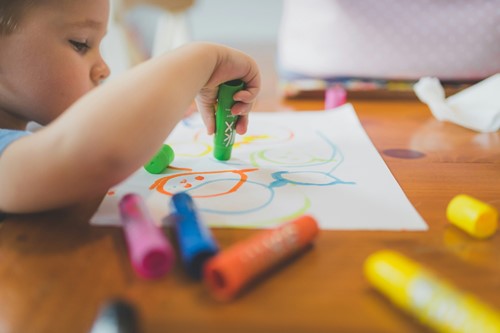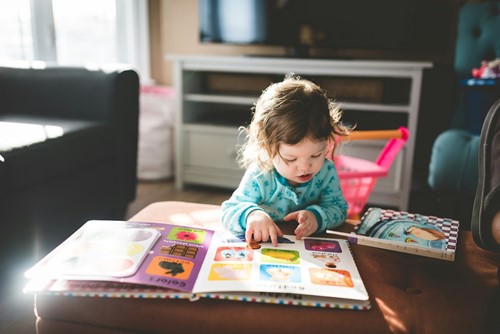Toddlers And Colouring: A Pathway To Early Learning Success
When it comes to early learning, the significance of engaging toddlers in developmental activities cannot be overstated. Among these, colouring emerges as a crucial tool—not just for amusement but also as a means to achieve developmental milestones.

Once you hand a crayon to a toddler and observe them as they explore a blank page, you witness more than a moment of silent concentration. You’re observing the mechanisms of early learning success at work.
In this article, you’ll discover the reasons why colouring is not merely a pastime but a critical element in the foundation of a child’s educational journey:
The Importance Of Colouring In Early Development
Colouring, often seen as a simple, leisurely activity for toddlers, holds a much deeper significance in their early development. It is an interactive process that nurtures a child’s cognitive, emotional, and physical growth.
Before you explore various educational platforms like DoodleLearning or browse coloring pages for kids for engaging activities, here’s why it’s essential for a toddler’s early development:
Emotional And Psychological Well-Being
Colouring offers profound emotional and psychological benefits. It provides a safe outlet for expressing feelings and moods, which is crucial for toddlers who are just beginning to understand their emotions. Selecting colours and applying them to paper allows children to express what they cannot yet verbalise, aiding in the development of emotional literacy.
Additionally, colouring can be a calming and therapeutic activity, reducing anxiety and promoting mindfulness. The focus required to colour can help children practice attention and meditation, offering a break from the overstimulation of the digital world. This tranquillity and focus are essential for emotional regulation and the development of patience.
Cognitive Development
Colouring is an early platform for brain development, engaging toddlers in problem-solving and decision-making. Choosing colours or attempting to stay within lines stimulates their brain, enhancing critical thinking and spatial awareness. It introduces basic planning and execution tasks as children decide on colour sequences and filling methods, advertently improving cognitive flexibility and planning skills.
Colouring also aids in the development of colour recognition and vocabulary. As toddlers learn to identify and name colours, they lay the foundation for linguistic skills. This interaction with colours enhances memory through repetition and reinforcement, an essential aspect of cognitive learning.
 Social Development
Social Development
While colouring is often a solitary activity, it can also foster social development when incorporated into group settings. Sharing colouring materials, collaborating on a single piece, or discussing their artwork with peers and adults teaches toddlers valuable lessons in sharing, cooperation, and respect for others’ work. These interactions promote empathy and communication skills, foundational elements of social intelligence.
Fine Motor Skills And Coordination
The physical act of colouring may help enhance fine motor skills and hand-eye coordination. Holding crayons or pencils correctly and applying pressure to control the movement develops muscle strength in the hands and fingers.
This dexterity is crucial for future tasks such as writing, buttoning clothes, or using scissors. Moreover, the coordination required to colour within lines or create shapes helps develop visual-motor skills, which are essential for academic tasks, including reading and writing.
Through these diverse avenues, colouring proves to be more than just an activity to pass the time. It plays a pivotal role in a child’s development, fostering skills and abilities that lay the foundation for lifelong learning and growth. Encouraging colouring from an early age can thus be seen as an investment in a child’s future, highlighting its importance beyond mere entertainment.
Implementing Colouring Activities: Best Practices
To maximise the benefits of colouring for early childhood development, consider the following best practices:
* Offer A Variety Of Materials: Provide crayons, coloured pencils, and washable markers to allow toddlers to explore different mediums. This variety encourages experimentation and keeps their interest alive.
* Use Age-Appropriate Colouring Books: Choose books with large, simple images for younger toddlers and more complex scenes for older children. This progression challenges them appropriately and keeps them engaged.
* Encourage Free Expression: While teaching toddlers to colour within the lines has its benefits, it’s equally important to encourage freehand drawing. This promotes creativity and self-expression without the constraints of predefined boundaries.
* Create A Positive Environment: Make colouring a stress-free activity. Avoid criticising mistakes and instead praise efforts and creativity. A positive approach boosts confidence and enjoyment.
* Incorporate Learning Opportunities: Use colouring as a chance to teach colours, shapes, and even new words. This integration of learning and play makes the experience both educational and enjoyable.
Adhering to these practices enriches the colouring experience and significantly contributes to a child’s developmental milestones, fostering a well-rounded growth environment.
Conclusion
Colouring is not just a way to pass the time. It is a fundamental building block in the early learning journey of a toddler, offering a unique blend of cognitive, motor, emotional, and creative development opportunities. By engaging in this simple activity, toddlers hone their fine motor skills and embark on a path of self-expression, concentration, and imaginative exploration. The benefits extend beyond the paper, influencing their academic readiness and emotional resilience.